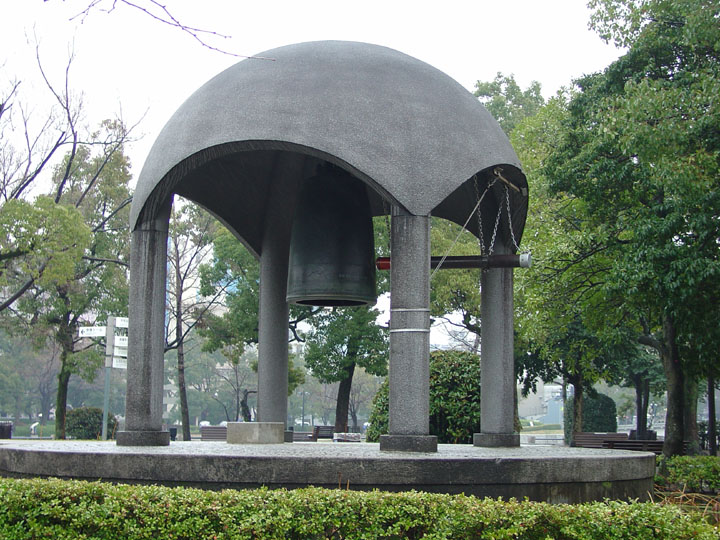

Peace Garden
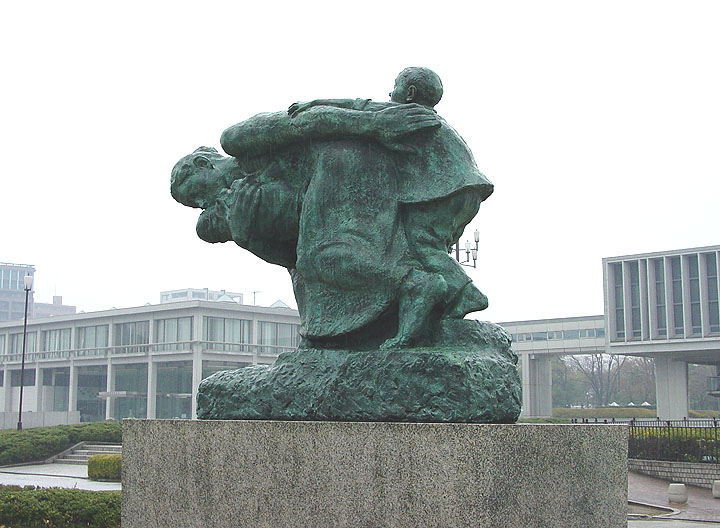
The Peace Museum
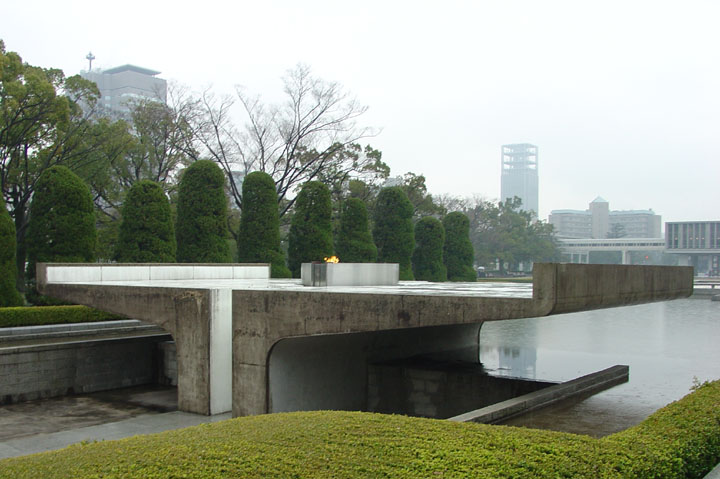
the flame
will burn as long as atomic weapons exist on earth
The Memorial Cenotaph
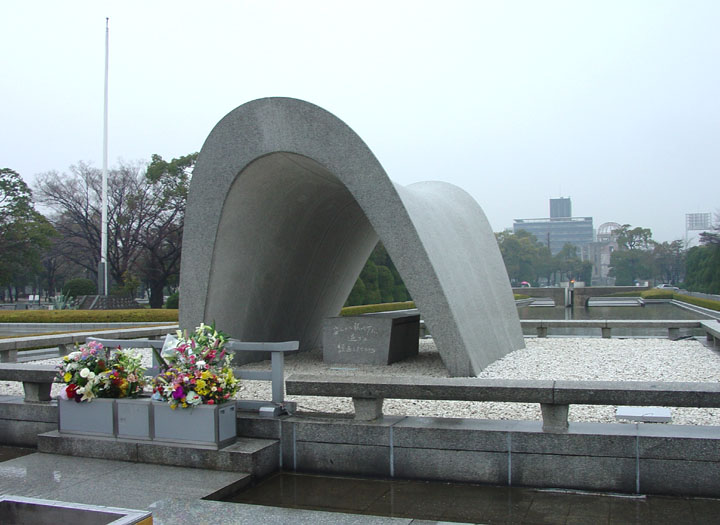
The Memorial Cenotaph
The Memorial Cenotaph (Hiroshima Peace City Memorial) is the central monument to honor and console the souls of the victims of the A-bombing. It stands close to the exact center of Peace Memorial Park and was unveiled on August 6, 1952.
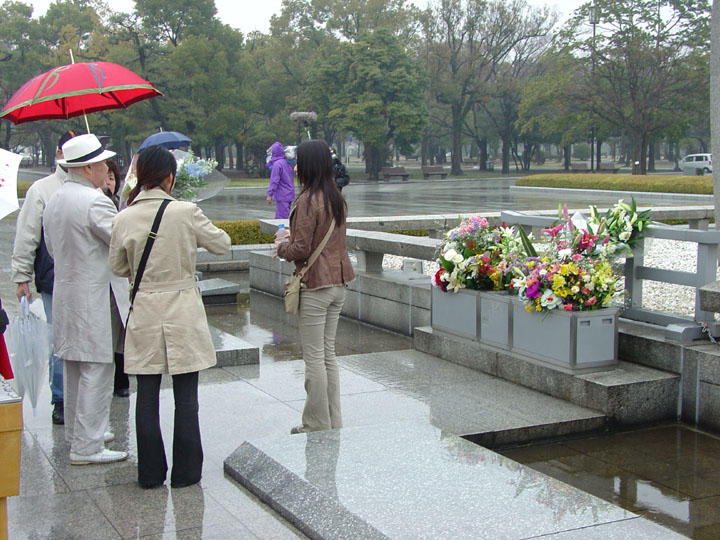
people come to pay respect
The design evokes the primitive shelters provided to earthenware dolls buried in ancient burial mounds during the Kofun period (third to seventh century). The concrete structure was resurfaced with granite in March 1985.
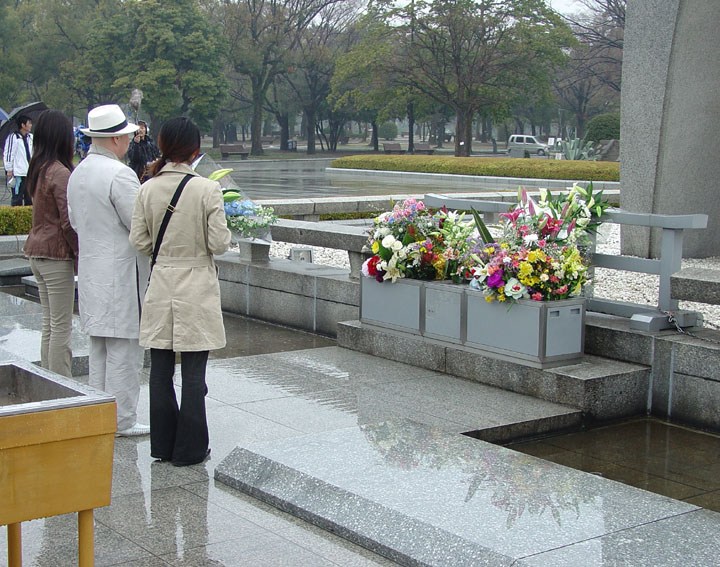
by presenting flowers
At the center of the monument lies a stone coffin Which holds the Register of the A-bomb Victims. Each year on August 6 the names of victims reported by their friends or families to have died of A-bomb-related diseases are added to the register.
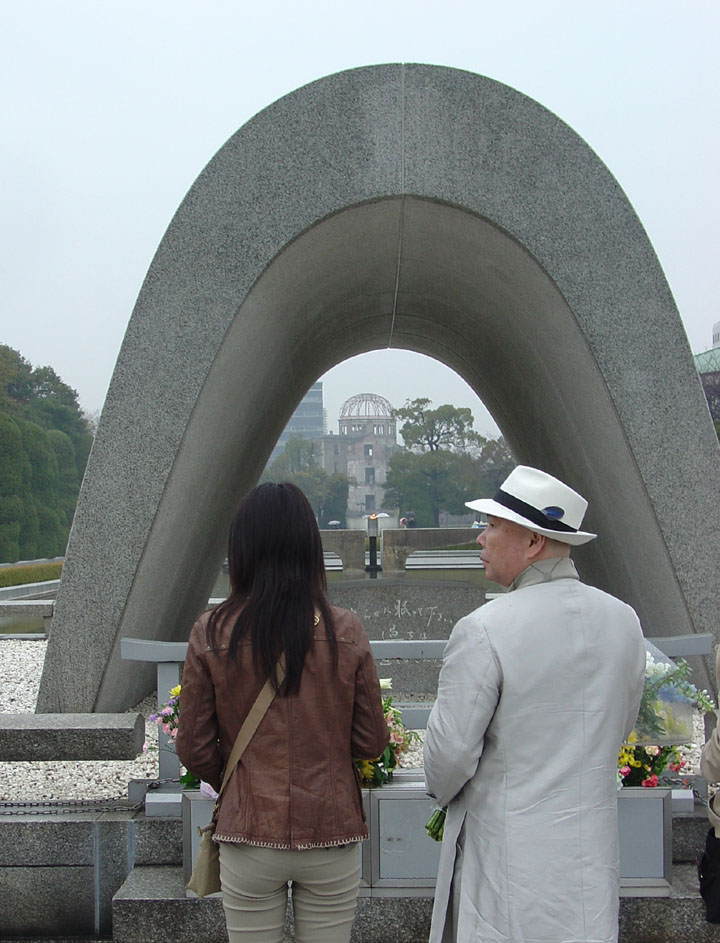
and remembering the horrors of atomic warfare
The Japanese characters carved on the front of the coffin say, "Let All The Souls Here Rest In Peace; For We Shall Not Repeat The Evil." These words are a pledge never again to repeat the evil of war that visitors make as they pray for the repose of the souls of the A-bomb victims.
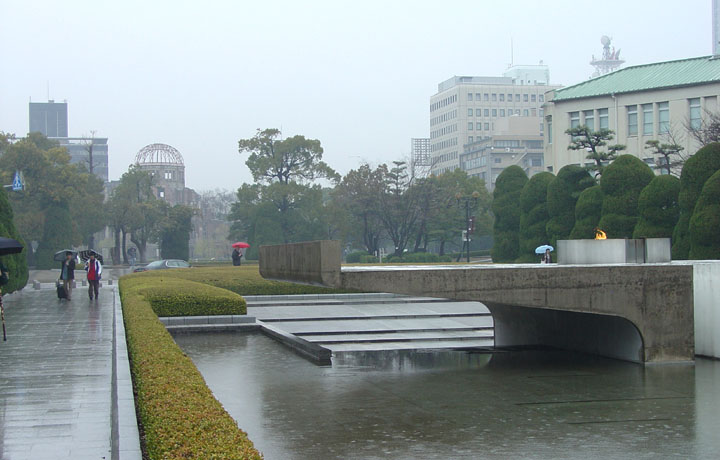
the flame looking to the A-bomb Dome
They express Hiroshima's determination to endure the sorrows of the past, transcend all rage and hatred, and work tirelessly for a world of genuine peace and mutual prosperity.
Children's Peace Monument
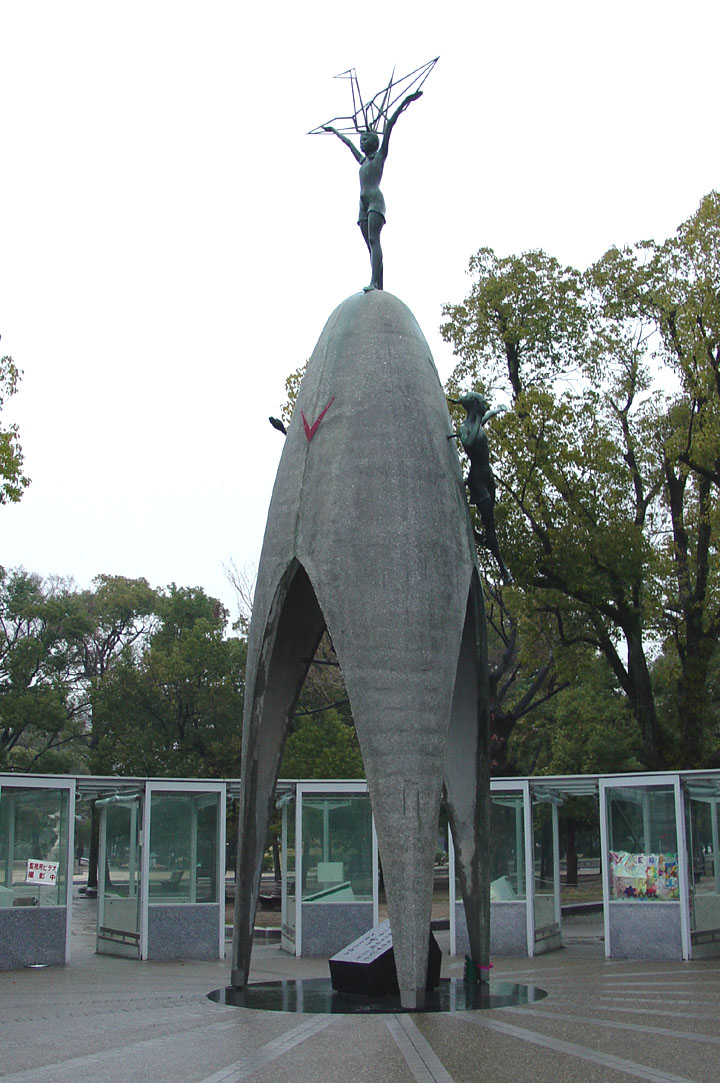

Children's Peace Monument
One of the most popular monuments in Peace Memorial Park is the Children's Peace Monument, also known as the Tower of the Paper Cranes. This monument was inspired by Sadako Sasaki, a vivacious young girl struck down by radiation aftereffects. Sadako, two at the time of the bombing, was one of many children who developed leukemia about ten years later.
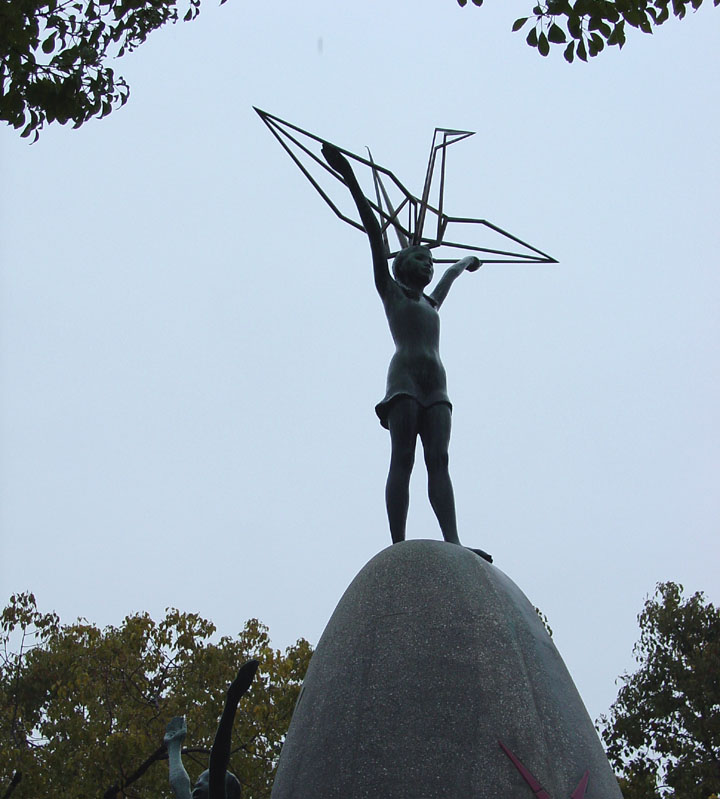
In the hospital she folded over a thousand paper cranes using medicine wrapping paper in the hope that doing so would cure her. She and her classmates continued bravely folding the cranes until the day she died-October 25,1955. Sadako's grieving classmates decided to build a monument in her honor.
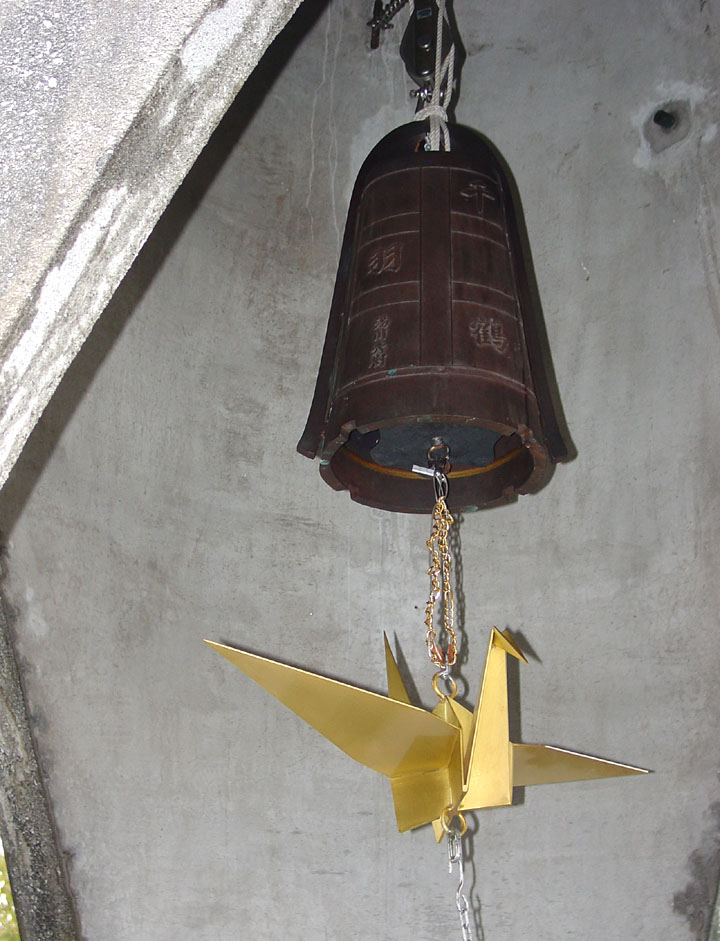
Their sincere passion led to a nationwide fundraising campaign to build a monument for her and the thousands of other children lost to the atomic bombing. With contributions from all over Japan, the monument was built and unveiled on May 5, 1958. On top of the concrete tower stands the bronze statue of a young girl holding over her head a huge paper crane symbolizing the hope of all children for a peaceful future.
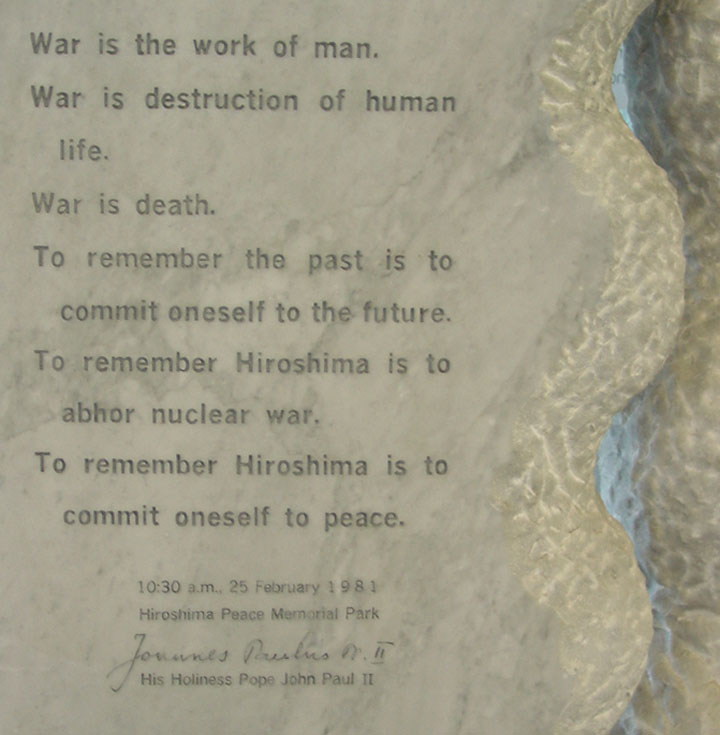
from the visit of the Pope
In and around Peace Memorial Park stand numerous monuments to A-bomb victims. Each and every one of these monuments, beyond its specific purpose, embodies the common desire that nuclear weapons be abolished and world peace be realized.
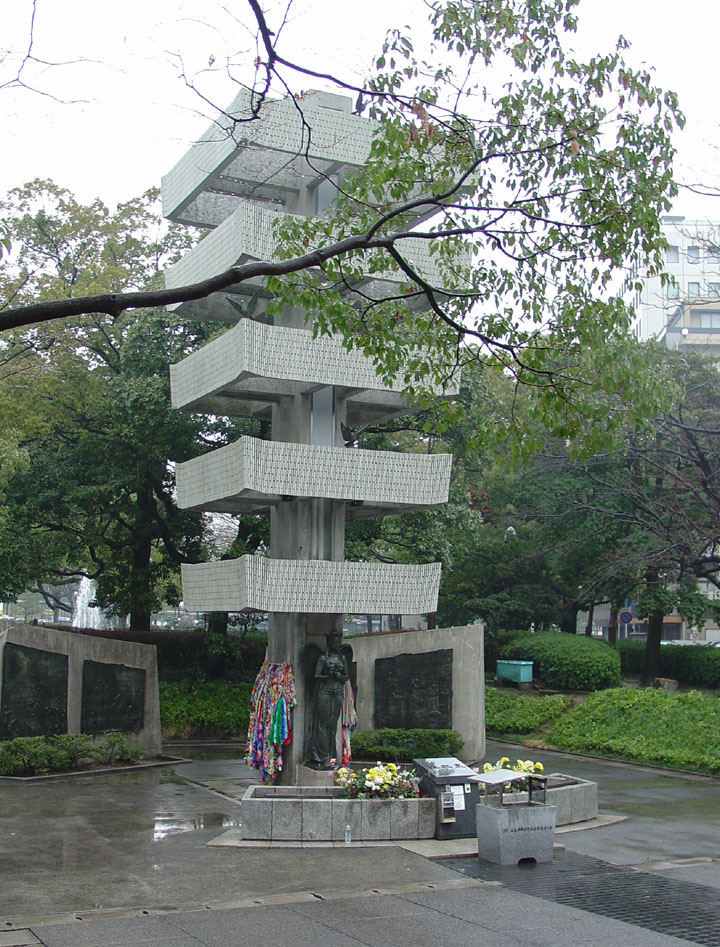
Memorial Tower To the Mobilized Studentsts
This tower was erected by the association for the Mobilized Student Victims of Hiroshima Prefecture in May 1967, in the park area to the south of the A-bomb Dome. During the Pacific War, students were mobilized for labor service to increase production and for the demolition of buildings. Among them some 6,000 were killed in the atomic bombing. On each side of the tower are two plaques, each two-meters high showing 1) Work to increase food production, 2) Girl students sewing, 3) Factory work, and 4) Lanterns floating in the river.
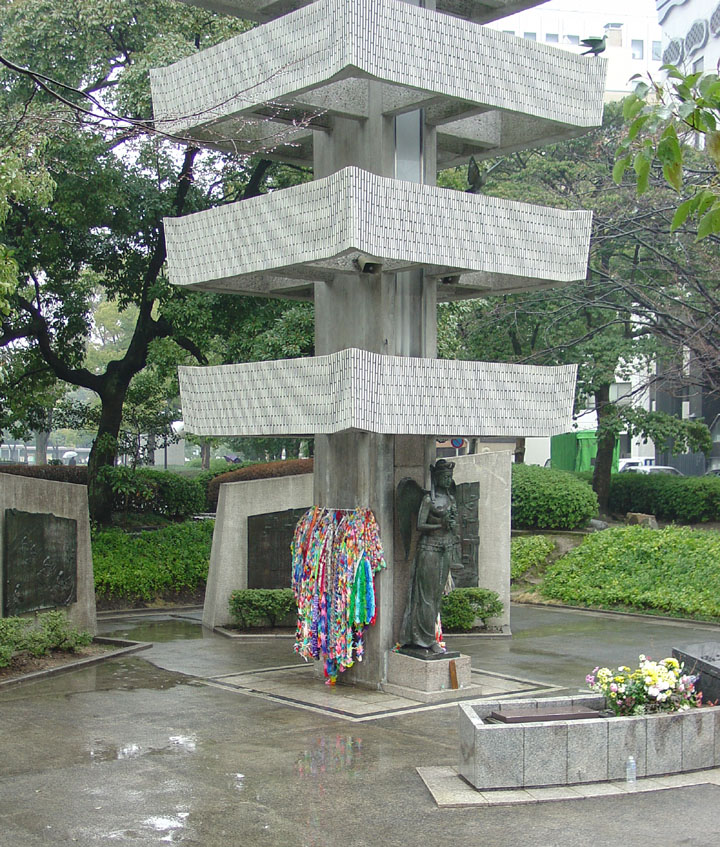
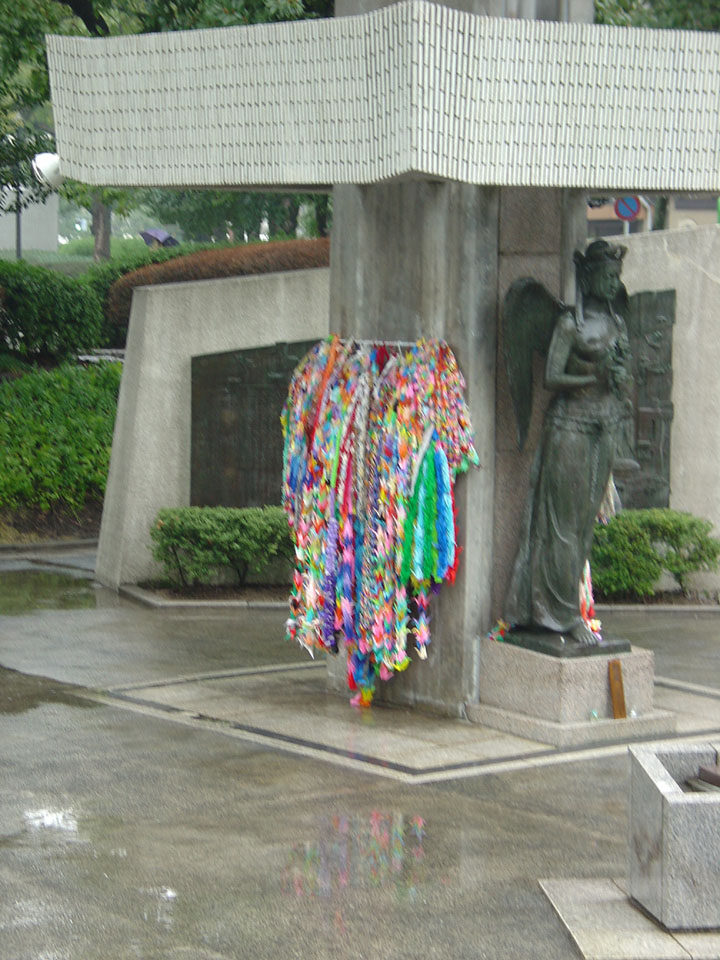
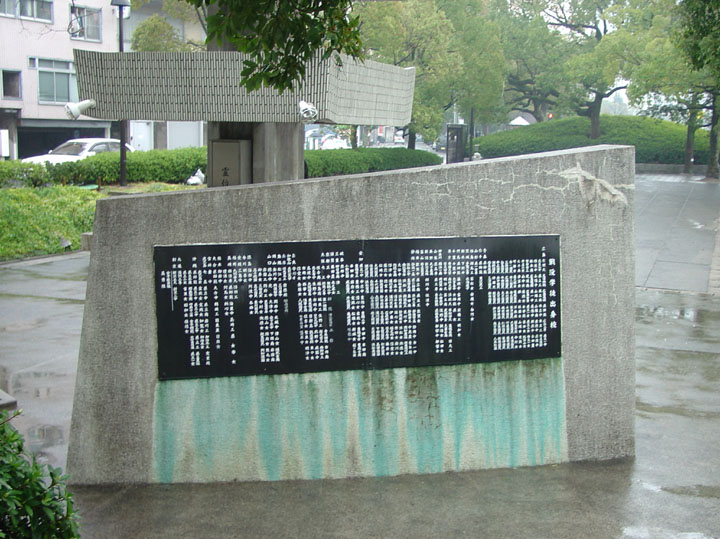
A-bomb Memorial Mound
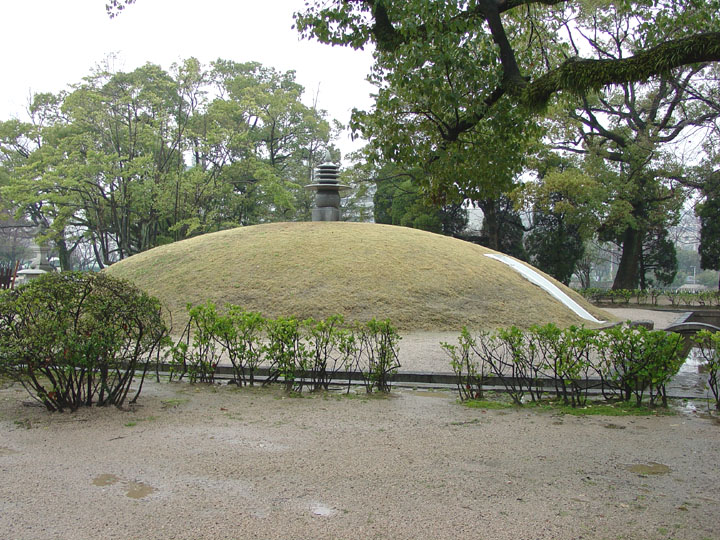
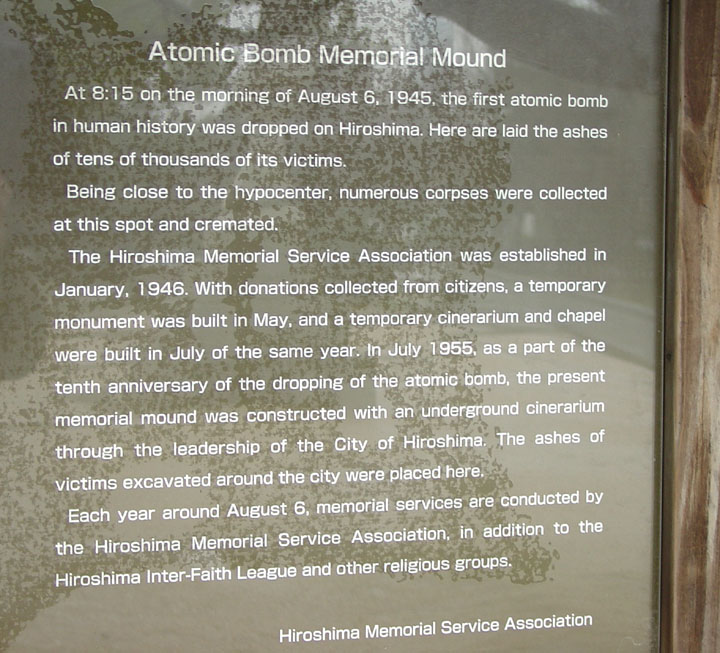
A-bomb Memorial Mound
The ashes of tens of thousands of victims of the A-bombing were placed in the A-bomb Memorial Mound at the northwestern end of Peace Park. Most of them were unidentified. Immediately after the bombing of Hiroshima the dead bodies were cremated by rescue squads and the ashes have been gathered together in the mound
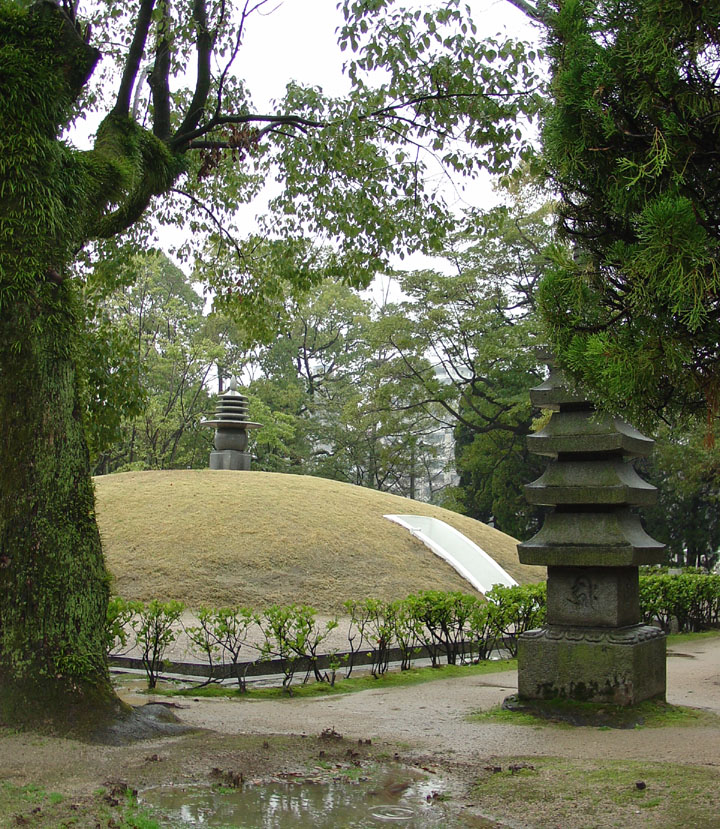
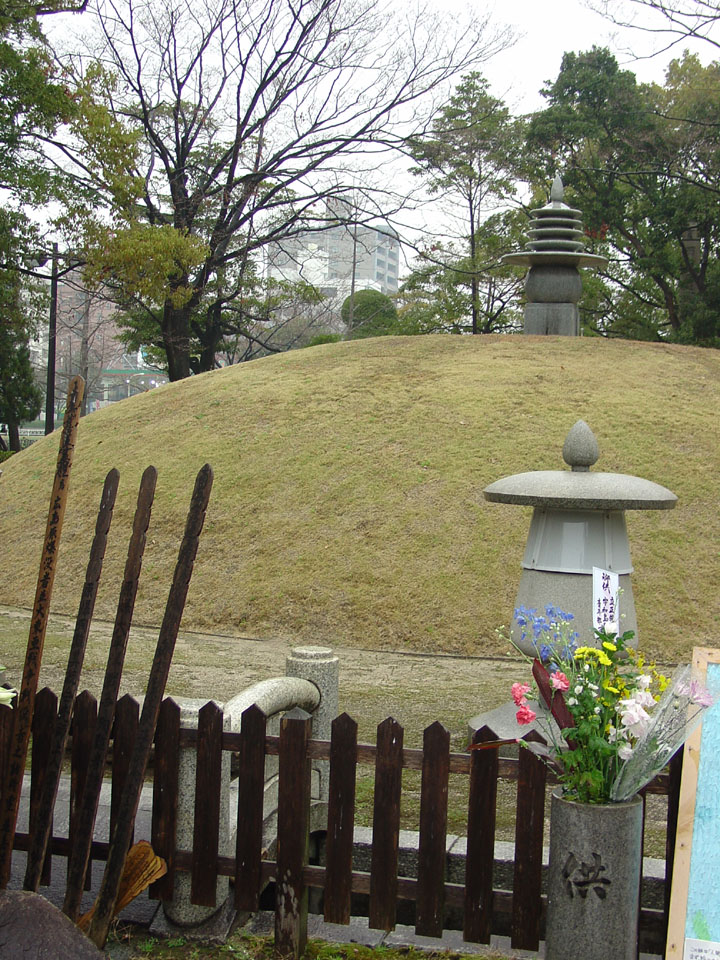
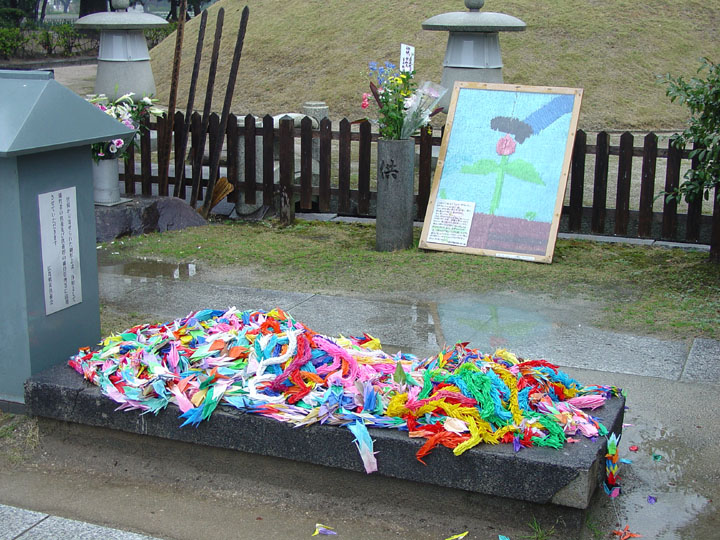
paper cranes beside the mound
Peace Bell
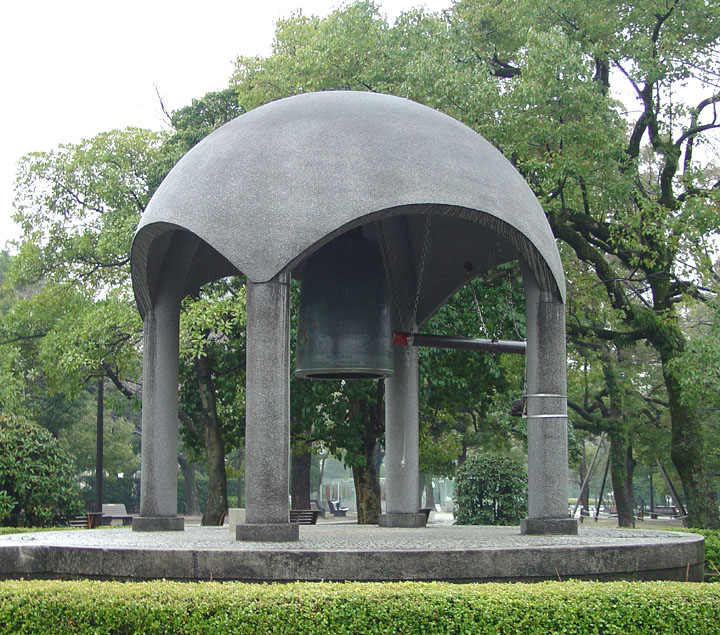
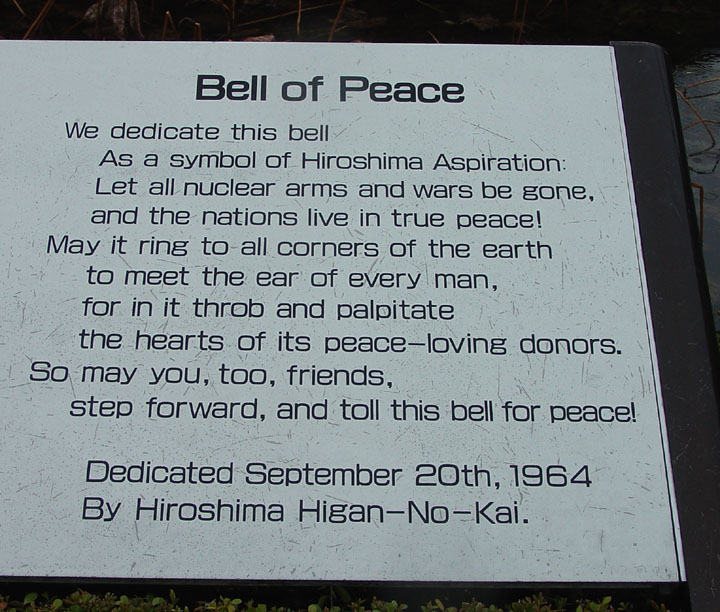
Peace Bell
The ceremony for the first striking of the Peace Bell took place on September 20, 1964, upon completion of the bell. A world map with no national boundaries symbolizing "One World" is engraved on the surface of the bell, which is 1.5 meters long and 1,200 kilograms in weight. Visitors are encouraged to toll the bell freely.
